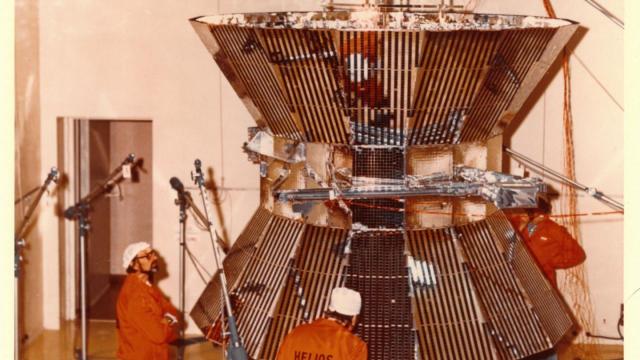Scientists have found lava lamp-like blobs up to 500 times larger than the Earth in the solar wind, in data from a pair of spacecraft that launched in the 1970s.
There’s a ton we don’t know about the matter blasted into space by the Sun — that’s why scientists have sent the new Parker Solar Probe to observe the star up close.
This new research offers a preview of the kinds of things that Parker might see, providing a “more comprehensive study of solar wind formation,” according to the paper published in the Journal of Geophysical Research.
Today, scientists divide the solar wind that strikes Earth into two components, a “fast” and a “slow” stream, though they’re distinguished more by the kinds of matter they contain.
The fast solar wind seems to be comprised of elements similar to the Sun’s outer layers, and seems to originate from coronal holes — cooler areas in the plasma surrounding the Sun. But the slower solar winds can differ in their density and the kinds of elements they contain.
Scientists have attempted to associate the slow stream with various sources around the Sun. It’s been hard, though. Scientists have measured higher-density regions of plasma here on Earth thought to come from the Sun. Blobs, if you will. But they haven’t had many chances to take data in the region of space closer to the Sun.
The team of researchers behind the newest paper was able to add evidence to that region thanks to a pair of spacecraft that haven’t sent data back to the Earth since the 1980s: Helios 1 and 2. They found similar higher-density blobs in the intervening space that seem to match those that strike Earth’s magnetosphere, and which seemed to emerge from the Sun approximately every hour and a half.
NASA and the German Test and Research Institute for Aviation and Space Flight (today called the German Aerospace Center or DLR), launched the Helios probes in 1974 and 1976 in order to understand the particles emitted by the Sun.
Much of the work behind the newest paper involved figuring out and cleaning up the decades-old data, going as far as reading the German instruction manual in order to understand the instruments, according to a NASA press release. The hard work paid off, revealing chains of these blobs and potentially pinpointing locations on the Sun where they could have emerged.
It’s an exciting find, but one that brings ups many questions as to the nature of the blobs. Thankfully, last year NASA launched the record-breaking Parker Solar Probe, hoping to “touch” the corona and solve some of the mysteries about how the solar wind works.
